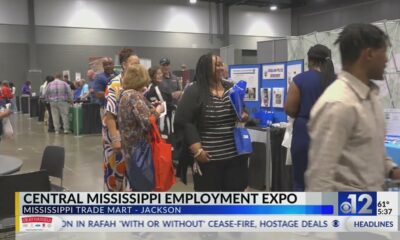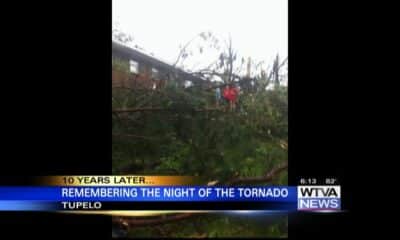Kaiser Health News
Too Big To Fail? Now It’s ‘Too Big To Hack’
Thu, 18 Apr 2024 18:00:00 +0000
The Host
Mary Agnes Carey
KFF Health News
Lawmakers in Washington this week held the first congressional hearing on the Change Healthcare cyberattack, a breach that sent shock waves through the health care system as payments for care ground to a halt and left some providers in financial trouble. Republicans and Democrats alike zeroed in on how big health care conglomerations — like Change's parent company, UnitedHealth Group — are leaving patients vulnerable.
And nearly 1 in 4 adults who lost Medicaid coverage in the past year are now uninsured, according to a new KFF survey probing the effects of what's known as the “unwinding” of enrollments in the government insurance program for low-income people since pandemic-era protections expired.
This week's panelists are Mary Agnes Carey of KFF Health News, Jessie Hellmann of CQ Roll Call, Sarah Karlin-Smith of the Pink Sheet, and Lauren Weber of The Washington Post.
Panelists
Jessie Hellmann
CQ Roll Call
Sarah Karlin-Smith
Pink Sheet
Lauren Weber
The Washington Post
Among the takeaways from this week's episode:
- Though the Change Healthcare hearing on Capitol Hill illuminated bipartisan agreement on the perils of vertical integration in health care, lawmakers did not agree on possible solutions. Addressing consolidation, however, could remedy issues in health care beyond cybersecurity.
- The KFF survey on the unwinding found that nearly half of those who lost coverage signed back up for Medicaid weeks or months later, a signal that those enrollees should never have been dropped in the first place. Even a temporary loss in health coverage can have serious, lingering consequences.
- Republicans in Arizona are grappling with the fallout from the state's newly reinstated, Civil War-era abortion law — echoing recent problems for Alabama Republicans after a state Supreme Court ruling upended access to in vitro fertilization there. Softened stances from conservative hard-liners like Senate candidate Kari Lake point to the potential negative consequences for the party in a critical election year.
- And the Centers for Disease Control and Prevention released new information about the current measles outbreak, revealing that many of those sickened are children, as well as adults who are unvaccinated or whose vaccination status is unknown.
Also this week, Julie Rovner, KFF Health News' chief Washington correspondent, interviews Caroline Pearson of the Peterson Health Technology Institute.
Plus, for “extra credit,” the panelists suggest health policy stories they read this week that they think you should read, too:
Mary Agnes Carey: KFF Health News' “When Rogue Brokers Switch People's ACA Policies, Tax Surprises Can Follow,” by Julie Appleby.
Jessie Hellmann: Tampa Bay Times' “Vulnerable Florida Patients Scramble After Abrupt Medicaid Termination,” by Teghan Simonton.
Sarah Karlin-Smith: Stat's “Grocers Are Pushing Legislation They Claim Would Enhance Food Safety. Advocates Say It Would Gut FDA Rules,” by Nicholas Florko.
Lauren Weber: The New York Times' “Chinese Company Under Congressional Scrutiny Makes Key U.S. Drugs,” by Christina Jewett.
Also mentioned on this week's podcast:
- KFF Health News' “Nearly 1 in 4 Adults Dumped From Medicaid Are Now Uninsured, Survey Finds,” by Phil Galewitz.
- The New York Times' “Under Pressure From Trump, Arizona Republicans Weigh Response to 1864 Abortion Ban,” by Chris Cameron.
Credits
Francis Ying
Audio producer
Emmarie Huetteman
Editor
To hear all our podcasts, click here.
And subscribe to KFF Health News' “What the Health?” on Spotify, Apple Podcasts, Pocket Casts, or wherever you listen to podcasts.
——————————
Title: Too Big To Fail? Now It's ‘Too Big To Hack'
Sourced From: kffhealthnews.org/news/podcast/what-the-health-343-health-care-consolidation-april-18-2024/
Published Date: Thu, 18 Apr 2024 18:00:00 +0000
Did you miss our previous article…
https://www.biloxinewsevents.com/medicares-push-to-improve-chronic-care-attracts-businesses-but-not-many-doctors/
Kaiser Health News
AC, Power Banks, Mini Fridges: Oregon Equips Medicaid Patients for Climate Change
Samantha Young
Wed, 01 May 2024 06:00:00 +0000
Oregon is shipping air conditioners, air purifiers, and power banks to some of its most vulnerable residents, a first-in-the-nation experiment to use Medicaid money to prevent the potentially deadly health effects of extreme heat, wildfire smoke, and other climate-related disasters.
The equipment, which started going out in March, expands a Biden administration strategy to move Medicaid beyond traditional medical care and into the realm of social services.
At least 20 states, including California, Massachusetts, and Washington, already direct billions of Medicaid dollars into programs such as helping homeless people get housing and preparing healthy meals for people with diabetes, according to KFF. Oregon is the first to use Medicaid money explicitly for climate-related costs, part of its five-year, $1.1 billion effort to address social needs, which also includes housing and nutrition benefits.
State and federal health officials hope to show that taxpayer money and lives can be saved when investments are made before disaster strikes.
“Climate change is a health care issue,” so helping Oregon's poorest and sickest residents prepare for potentially dangerous heat, drought, and other extreme weather makes sense, said Health and Human Services Secretary Xavier Becerra on a visit to Sacramento, California, in early April.
Becerra said the Biden administration wants states to experiment with how best to improve patient health, whether by keeping someone housed instead of homeless, or reducing their exposure to heat with an air conditioner.
But Medicaid's expansion into social services may duplicate existing housing and nutrition programs offered by other federal agencies, while some needy Americans can't get essential medical care, said Gary Alexander, director of the Medicaid and Health Safety Net Reform Initiative at the Paragon Health Institute.
“There are 600,000 or 700,000 intellectually disabled people in the United States waiting for Medicaid services. They're on a waitlist,” said Alexander, who oversaw state health agencies in Pennsylvania and Rhode Island. “Meanwhile Medicaid has money for housing and food and air conditioners for recipients. Seems to me that we should serve the intellectually disabled first before we get into all of these new areas.”
Scientists and public health officials say climate change poses a growing health risk. More frequent and intense floods, droughts, wildfires, extreme temperatures, and storms cause more deaths, cardiovascular disease from poor air quality, and other problems, according to the federal government's Fifth National Climate Assessment.
The mounting health effects disproportionately hit low-income Americans and people of color, who are often covered by Medicaid, the state-federal health insurance program for low-income people.
Most of the 102 Oregonians who died during the deadly heat dome that settled over the Pacific Northwest in 2021 “were elderly, isolated and living with low incomes,” according to a report by the Oregon Health Authority, which administers the state's Medicaid program, with about 1.4 million enrollees. The OHA's analysis of urgent care and emergency room use from May through September of 2021 and 2022 found that 60% of heat-related illness visits were from residents of areas with a median household income below $50,000.
“In the last 10-plus years, the amount of fires and smoke events and excessive heat events that we've had has shown the disproportionate impact of those events on those with lower incomes,” said Dave Baden, the OHA's deputy director for programs and policy.
And, because dangerously high temperatures aren't common in Oregon, many residents don't have air conditioning in their homes.
Traditionally, states hit by natural disasters and public health emergencies have asked the federal government for permission to spend Medicaid dollars on back-up power, air filters, and other equipment to help victims recover. But those requests came after the fact, following federal emergency declarations.
Oregon wants to be proactive and pay for equipment that will help an estimated 200,000 residents manage their health at home before extreme weather or climate-related disaster hits, Baden said. In addition to air conditioning units, the program will pay for mini fridges to keep medications cold, portable power supplies to run ventilators and other medical devices during outages, space heaters for winter, and air filters to improve air quality during wildfire season.
In March, the Oregon Health Plan, the state's Medicaid program, began asking health insurers to find patients who might need help coping with extreme weather. Recipients must meet federal guidelines that categorize them as “facing certain life transitions,” a stringent set of requirements that disqualify most enrollees. For example, a person with an underlying medical condition that could worsen during a heat wave, and who is also at risk for homelessness or has been released from prison in the past year, could receive an air conditioner. But someone with stable housing might not qualify.
“You could be in a housing complex, and your neighbor qualified for an air conditioner and you didn't,” Baden said.
At the offices of insurer AllCare Health in Grants Pass, Oregon, air conditioners, air filters, and mini fridges were piled in three rooms in mid-April, ready to be handed over to Medicaid patients. The health plan provided equipment to 19 households in March. The idea is to get the supplies into people's homes before the summer fire season engulfs the valley in smoke.
Health plans don't want to find themselves “fighting the masses” at Home Depot when the skies are already smoky or the heat is unbearable, said Josh Balloch, AllCare's vice president of health policy.
“We're competing against everybody else, and you can't find a fan on a hot day,” he said.
Oregon and some other states have already used Medicaid money to buy air conditioners, air purifiers, and other goods for enrollees, but not under the category of climate change. For example, California offers air purifiers to help asthma patients and New York just won federal approval to provide air conditioners to asthma patients.
Baden said Oregon health officials will evaluate whether sending air conditioners and other equipment to patients saves money by looking at their claim records in the coming years.
If Oregon can help enrollees avoid a costly trip to the doctor or the ER after extreme weather, other state Medicaid programs may ask the federal government if they can adopt the benefit. Many states haven't yet used Medicaid money for climate change because it affects people and regions differently, said Paul Shattuck, a senior fellow at Mathematica, a research organization that has surveyed state Medicaid directors on the issue.
“The health risks of climate change are everywhere, but the nature of risk exposure is completely different in every state,” Shattuck said. “It's been challenging for Medicaid to get momentum because each state is left to their own devices to figure out what to do.”
A California state lawmaker last year introduced legislation that would have required Medi-Cal, the state's Medicaid program, to add a climate benefit under its existing social services expansion. The program would have been similar to Oregon's, but AB 586, by Assembly member Lisa Calderon, died in the Assembly Appropriations Committee, which questioned in a staff analysis whether “climate change remediation supports can be defined as cost-effective.”
The cost savings are clear to Kaiser Permanente. After the 2021 heat wave, it sent air conditioners to 81 patients in Oregon and southwest Washington whose health conditions might get worse in extreme heat, said Catherine Potter, community health consultant at the health system. The following year, Kaiser Permanente estimated it had prevented $42,000 in heat-related ER visits and $400,000 in hospital admissions, she said.
“We didn't used to have extreme heat like this, and we do now,” said Potter, who has lived in the temperate Portland area for 30 years. “If we can prevent these adverse impacts, we should be preventing them especially for people that are going to be most affected.”
This article was produced by KFF Health News, which publishes California Healthline, an editorially independent service of the California Health Care Foundation.
——————————
By: Samantha Young
Title: AC, Power Banks, Mini Fridges: Oregon Equips Medicaid Patients for Climate Change
Sourced From: kffhealthnews.org/news/article/oregon-medicaid-patients-climate-benefits/
Published Date: Wed, 01 May 2024 06:00:00 +0000
Did you miss our previous article…
https://www.biloxinewsevents.com/who-overturns-dogma-on-airborne-disease-spread-the-cdc-might-not-act-on-it/
Kaiser Health News
WHO Overturns Dogma on Airborne Disease Spread. The CDC Might Not Act on It.
Amy Maxmen
Wed, 01 May 2024 09:00:00 +0000
The World Health Organization has issued a report that transforms how the world understands respiratory infections like covid-19, influenza, and measles.
Motivated by grave missteps in the pandemic, the WHO convened about 50 experts in virology, epidemiology, aerosol science, and bioengineering, among other specialties, who spent two years poring through the evidence on how airborne viruses and bacteria spread.
However, the WHO report stops short of prescribing actions that governments, hospitals, and the public should take in response. It remains to be seen how the Centers for Disease Control and Prevention will act on this information in its own guidance for infection control in health care settings.
The WHO concluded that airborne transmission occurs as sick people exhale pathogens that remain suspended in the air, contained in tiny particles of saliva and mucus that are inhaled by others.
While it may seem obvious, and some researchers have pushed for this acknowledgment for more than a decade, an alternative dogma persisted — which kept health authorities from saying that covid was airborne for many months into the pandemic.
Specifically, they relied on a traditional notion that respiratory viruses spread mainly through droplets spewed out of an infected person's nose or mouth. These droplets infect others by landing directly in their mouth, nose, or eyes — or they get carried into these orifices on droplet-contaminated fingers. Although these routes of transmission still happen, particularly among young children, experts have concluded that many respiratory infections spread as people simply breathe in virus-laden air.
“This is a complete U-turn,” said Julian Tang, a clinical virologist at the University of Leicester in the United Kingdom, who advised the WHO on the report. He also helped the agency create an online tool to assess the risk of airborne transmission indoors.
Peg Seminario, an occupational health and safety specialist in Bethesda, Maryland, welcomed the shift after years of resistance from health authorities. “The dogma that droplets are a major mode of transmission is the ‘flat Earth' position now,” she said. “Hurray! We are finally recognizing that the world is round.”
The change puts fresh emphasis on the need to improve ventilation indoors and stockpile quality face masks before the next airborne disease explodes. Far from a remote possibility, measles is on the rise this year and the H5N1 bird flu is spreading among cattle in several states. Scientists worry that as the H5N1 virus spends more time in mammals, it could evolve to more easily infect people and spread among them through the air.
Traditional beliefs on droplet transmission help explain why the WHO and the CDC focused so acutely on hand-washing and surface-cleaning at the beginning of the pandemic. Such advice overwhelmed recommendations for N95 masks that filter out most virus-laden particles suspended in the air. Employers denied many health care workers access to N95s, insisting that only those routinely working within feet of covid patients needed them. More than 3,600 health care workers died in the first year of the pandemic, many due to a lack of protection.
However, a committee advising the CDC appears poised to brush aside the updated science when it comes to its pending guidance on health care facilities.
Lisa Brosseau, an aerosol expert and a consultant at the Center for Infectious Disease Research and Policy in Minnesota, warns of a repeat of 2020 if that happens.
“The rubber hits the road when you make decisions on how to protect people,” Brosseau said. “Aerosol scientists may see this report as a big win because they think everything will now follow from the science. But that's not how this works and there are still major barriers.”
Money is one. If a respiratory disease spreads through inhalation, it means that people can lower their risk of infection indoors through sometimes costly methods to clean the air, such as mechanical ventilation and using air purifiers, and wearing an N95 mask. The CDC has so far been reluctant to press for such measures, as it updates foundational guidelines on curbing airborne infections in hospitals, nursing homes, prisons, and other facilities that provide health care. This year, a committee advising the CDC released a draft guidance that differs significantly from the WHO report.
Whereas the WHO report doesn't characterize airborne viruses and bacteria as traveling short distances or long, the CDC draft maintains those traditional categories. It prescribes looser-fitting surgical masks rather than N95s for pathogens that “spread predominantly over short distances.” Surgical masks block far fewer airborne virus particles than N95s, which cost roughly 10 times as much.
Researchers and health care workers have been outraged about the committee's draft, filing letters and petitions to the CDC. They say it gets the science wrong and endangers health. “A separation between short- and long-range distance is totally artificial,” Tang said.
Airborne viruses travel much like cigarette smoke, he explained. The scent will be strongest beside a smoker, but those farther away will inhale more and more smoke if they remain in the room, especially when there's no ventilation.
Likewise, people open windows when they burn toast so that smoke dissipates before filling the kitchen and setting off an alarm. “You think viruses stop after 3 feet and drop to the ground?” Tang said of the classical notion of distance. “That is absurd.”
The CDC's advisory committee is comprised primarily of infection control researchers at large hospital systems, while the WHO consulted a diverse group of scientists looking at many different types of studies. For example, one analysis examined the puff clouds expelled by singers, and musicians playing clarinets, French horns, saxophones, and trumpets. Another reviewed 16 investigations into covid outbreaks at restaurants, a gym, a food processing factory, and other venues, finding that insufficient ventilation probably made them worse than they would otherwise be.
In response to the outcry, the CDC returned the draft to its committee for review, asking it to reconsider its advice. Meetings from an expanded working group have since been held privately. But the National Nurses United union obtained notes of the conversations through a public records request to the agency. The records suggest a push for more lax protection. “It may be difficult as far as compliance is concerned to not have surgical masks as an option,” said one unidentified member, according to notes from the committee's March 14 discussion. Another warned that “supply and compliance would be difficult.”
The nurses' union, far from echoing such concerns, wrote on its website, “The Work Group has prioritized employer costs and profits (often under the umbrella of ‘feasibility' and ‘flexibility') over robust protections.” Jane Thomason, the union's lead industrial hygienist, said the meeting records suggest the CDC group is working backward, molding its definitions of airborne transmission to fit the outcome it prefers.
Tang expects resistance to the WHO report. “Infection control people who have built their careers on this will object,” he said. “It takes a long time to change people's way of thinking.”
The CDC declined to comment on how the WHO's shift might influence its final policies on infection control in health facilities, which might not be completed this year. Creating policies to protect people from inhaling airborne viruses is complicated by the number of factors that influence how they spread indoors, such as ventilation, temperature, and the size of the space.
Adding to the complexity, policymakers must weigh the toll of various ailments, ranging from covid to colds to tuberculosis, against the burden of protection. And tolls often depend on context, such as whether an outbreak happens in a school or a cancer ward.
“What is the level of mortality that people will accept without precautions?” Tang said. “That's another question.”
——————————
By: Amy Maxmen
Title: WHO Overturns Dogma on Airborne Disease Spread. The CDC Might Not Act on It.
Sourced From: kffhealthnews.org/news/article/airborne-disease-transmission-who-cdc-new-evidence/
Published Date: Wed, 01 May 2024 09:00:00 +0000
Did you miss our previous article…
https://www.biloxinewsevents.com/toxic-gas-adds-to-a-long-history-of-pollution-in-southwest-memphis/
Kaiser Health News
Toxic Gas Adds to a Long History of Pollution in Southwest Memphis
Andy Miller
Tue, 30 Apr 2024 09:00:00 +0000
MEMPHIS, Tenn. — For many years, Rose Sims had no idea what was going on inside a nondescript brick building on Florida Street a couple of miles from her modest one-story home on the southwestern side of town.
Like other residents, she got an unwelcome surprise in October 2022 at a public forum held by the Environmental Protection Agency at the historic Monumental Baptist Church, known for its role in the civil rights movement. The EPA notified the predominantly Black community that Sterilization Services of Tennessee —which began operations in the brick building in the 1970s — had been emitting unacceptably high levels of ethylene oxide, a toxic gas commonly used to disinfect medical devices.
Airborne emissions of the colorless gas can increase the risk of certain medical conditions, including breast cancer. Sims, who is 59 and Black, said she developed breast cancer in 2019, despite having no family history of it, and she suspects ethylene oxide was a contributing factor.
“I used to be outside a lot. I was in good health. All of a sudden, I got breast cancer,” she said.
Local advocates say the emissions are part of a pattern of environmental racism. The term is often applied when areas populated primarily by racial and ethnic minorities and members of low-socioeconomic backgrounds, like southwest Memphis, are burdened with a disproportionate amount of health hazards.
The drivers of environmental racism include the promise of tax breaks for industry to locate a facility in a heavily minority community, said Malini Ranganathan, an urban geographer at American University in Washington, D.C. The cheaper cost of land also is a factor, as is the concept of NIMBY — or “not in my backyard” — in which power brokers steer possible polluters to poorer areas of cities.
A manager at Sterilization Services' corporate office in Richmond, Virginia, declined to answer questions from KFF Health News. An attorney with Leitner, Williams, Dooley & Napolitan, a law firm that represents the company, also declined to comment. Sterilization Services, in a legal filing asking for an ethylene oxide-related lawsuit to be dismissed, said the use of the gas, which sterilizes about half the medical devices in the U.S., is highly regulated to ensure public safety.
Besides southwest Memphis, there are nearly two dozen locales, mostly small cities — from Athens, Texas, to Groveland, Florida, and Ardmore, Oklahoma — where the EPA said in 2022 that plants sterilizing medical devices emit the gas at unusually high levels, potentially increasing a person's risk of developing cancer.
The pollution issue is so bad in southwest Memphis that even though Sterilization Services planned to close shop by April 30, local community leaders have been hesitant to celebrate. In a letter last year to a local Congress member, the company said it has always complied with federal, state, and local regulations. The reason for its closure, it said, was a problem with renewing the building lease.
But many residents see it as just one small win in a bigger battle over environmental safety in the neighborhood.
“It's still a cesspool of pollution,'' said Yolonda Spinks, of the environmental advocacy organization Memphis Community Against Pollution, about a host of hazards the community faces.
The air in this part of the city has long been considered dangerous. An oil refinery spews a steady plume of white smoke. A coal plant has leaked ash into the ground and the groundwater. The coal plant was replaced by a natural gas power plant, and now the Tennessee Valley Authority, which provides electricity for local power companies, plans to build a new gas plant there. A continual stream of heavy trucks chug along nearby highways and roads. Other transportation sources of air pollution include the Memphis International Airport and barge traffic on the nearby Mississippi River.
Lead contamination is also a concern, not just in drinking water but in the soil from now-closed lead smelters, said Chunrong Jia, a professor of environmental health at the University of Memphis. Almost all the heavy industry in Shelby County — and the associated pollutants — are located in southwest Memphis, Jia added.
Sources of pollution are often “clustered in particular communities,” said Darya Minovi, a senior analyst with the Union of Concerned Scientists, a nonprofit that advocates for environmental justice. When it comes to sterilizing facilities that emit ethylene oxide, areas inhabited largely by Black, Hispanic, low-income, and non-English-speaking people are disproportionately exposed, the group has found.
Four sites that the EPA labeled high-risk are in low-income areas of Puerto Rico. Seven sterilizer plants operate in that U.S. territory.
The EPA, responding to public concerns and to deepened scientific understanding of the hazards of ethylene oxide, recently released rules that the agency said would greatly reduce emissions of the toxic gas from sterilizing facilities.
KeShaun Pearson, who was born and raised in south Memphis and has been active in fighting environmental threats, said he is frustrated that companies with dangerous emissions are allowed to create “toxic soup” in minority communities.
In the area where the sterilization plant is located, 87% of the residents are people of color, and, according to the Southern Environmental Law Center, life expectancy there is about 10 years lower than the average for the county and state. The population within 5 miles of the sterilizer plant is mostly low-income, according to the Union of Concerned Scientists.
Pearson was part of Memphis Community Against the Pipeline, a group formed in 2020 to stop a crude oil pipeline that would have run through Boxtown, a neighborhood established by emancipated slaves and freedmen after the signing of the Emancipation Proclamation of 1863.
That campaign, which received public support from former Vice President Al Gore and actress-activist Jane Fonda, succeeded. After the ethylene oxide danger surfaced in 2022, the group changed the last word of its name from “pipeline” to “pollution.”
Besides breast and lymphoid cancers, animal studies have linked inhaling the gas to tumors of the brain, lungs, connective tissue, uterus, and mammary glands.
Last year, with the help of the Southern Environmental Law Center, the south Memphis community group urged the Shelby County Health Department to declare the ethylene oxide situation a public health emergency and shut down the sterilizing plant. But the health department said the company had complied with its existing air permit and with the EPA's rules and regulations.
A health department spokesperson, Joan Carr, said Shelby County enforces EPA regulations to ensure that companies comply with the federal Clean Air Act and that the agency has five air monitoring stations around the county to detect levels of other pollutants.
When the county and the Tennessee Department of Health did a cancer cluster study in 2023, the agencies found no evidence of the clustering of high rates of leukemia, non-Hodgkin lymphoma, or breast or stomach cancer near the facility. There were “hot and cold spots” of breast cancer found, but the study said it could not conclude that the clusters were linked to the facility.
Scientists have criticized the study's methodology, saying it did not follow the Centers for Disease Control and Prevention's recommendations for designing a cancer cluster investigation.
Meanwhile, several people have sued the sterilizing company, claiming their health has been affected by the ethylene oxide emissions. In a lawsuit seeking class-action status, Reginaé Kendrick, 21, said she was diagnosed with a brain tumor at age 6. Chemotherapy and radiation have stunted her growth, destroyed her hair follicles, and prevented her from going through puberty, said her mother, Robbie Kendrick.
In response to proposed stricter EPA regulations, meanwhile, the Tennessee attorney general helped lead 19 other state AGs in urging the agency to “forgo or defer regulating the use of EtO by commercial sterilizers.”
Sims said she's glad her neighborhood will have one less thing to worry about once Sterilization Services departs. But her feelings about the closure remain tempered.
“Hope they don't go to another residential area,” she said.
——————————
By: Andy Miller
Title: Toxic Gas Adds to a Long History of Pollution in Southwest Memphis
Sourced From: kffhealthnews.org/news/article/toxic-ethylene-oxide-gas-southwest-memphis/
Published Date: Tue, 30 Apr 2024 09:00:00 +0000
Did you miss our previous article…
https://www.biloxinewsevents.com/sign-here-financial-agreements-may-leave-doctors-in-the-drivers-seat/
-
Local News6 days ago
Sister of Mississippi man who died after police pulled him from car rejects lawsuit settlement
-
Mississippi Today6 days ago
At Lake High School in Scott County, the Un-Team will never be forgotten
-
Mississippi Today3 days ago
On this day in 1951
-
Mississippi News4 days ago
One injured in Mississippi officer-involved shooting after chase
-
SuperTalk FM2 days ago
Festival merger in Leland sets up one major event for Mississippi Delta
-
Mississippi News Video7 days ago
Vehicle struck and killed man lying in the road, Alcorn County sheriff says
-
Mississippi News6 days ago
Ridgeland man sentenced for molesting girl
-
Mississippi News1 day ago
Two women accused of shoplifting across southeast captured in Mississippi



































